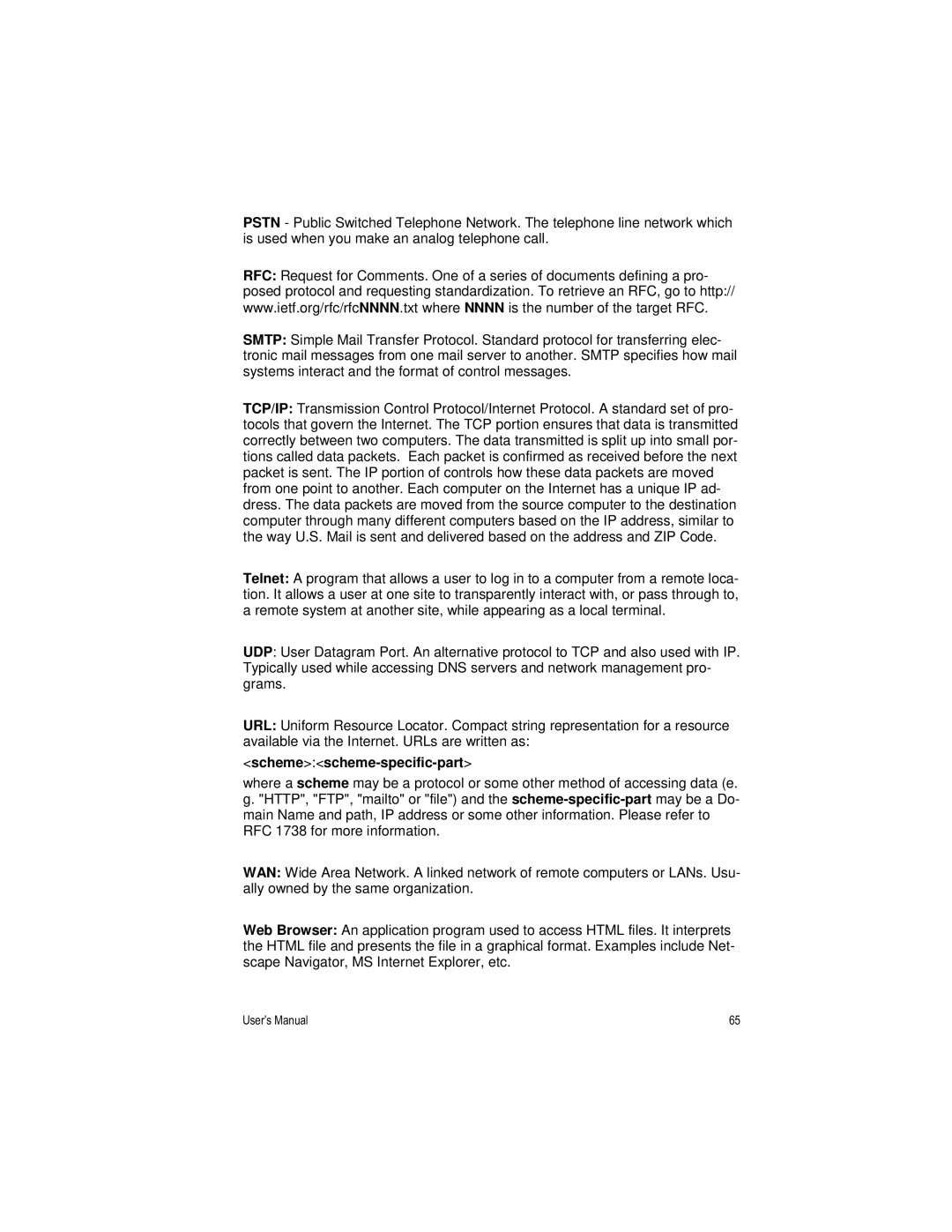PSTN - Public Switched Telephone Network. The telephone line network which is used when you make an analog telephone call.
RFC: Request for Comments. One of a series of documents defining a pro- posed protocol and requesting standardization. To retrieve an RFC, go to http:// www.ietf.org/rfc/rfcNNNN.txt where NNNN is the number of the target RFC.
SMTP: Simple Mail Transfer Protocol. Standard protocol for transferring elec- tronic mail messages from one mail server to another. SMTP specifies how mail systems interact and the format of control messages.
TCP/IP: Transmission Control Protocol/Internet Protocol. A standard set of pro- tocols that govern the Internet. The TCP portion ensures that data is transmitted correctly between two computers. The data transmitted is split up into small por- tions called data packets. Each packet is confirmed as received before the next packet is sent. The IP portion of controls how these data packets are moved from one point to another. Each computer on the Internet has a unique IP ad- dress. The data packets are moved from the source computer to the destination computer through many different computers based on the IP address, similar to the way U.S. Mail is sent and delivered based on the address and ZIP Code.
Telnet: A program that allows a user to log in to a computer from a remote loca- tion. It allows a user at one site to transparently interact with, or pass through to, a remote system at another site, while appearing as a local terminal.
UDP: User Datagram Port. An alternative protocol to TCP and also used with IP. Typically used while accessing DNS servers and network management pro- grams.
URL: Uniform Resource Locator. Compact string representation for a resource available via the Internet. URLs are written as:
<scheme>:<scheme-specific-part>
where a scheme may be a protocol or some other method of accessing data (e.
g."HTTP", "FTP", "mailto" or "file") and the
WAN: Wide Area Network. A linked network of remote computers or LANs. Usu- ally owned by the same organization.
Web Browser: An application program used to access HTML files. It interprets the HTML file and presents the file in a graphical format. Examples include Net- scape Navigator, MS Internet Explorer, etc.
User’s Manual | 65 |
